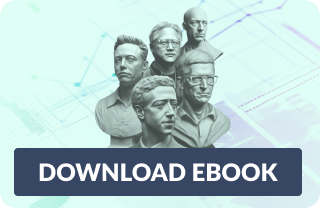Renewable energy trumps all. So what’s stopping us from having the cheapest energy in the world?
Having returned from a recent trip to London and Singapore there was one common theme – the cost of living is spiralling out of control and at the heart of this inflation is the cost of energy.
Energy impacts every part of our lives; lighting, heating, cooling, food, transport, manufacturing, and the list goes on. It was clear in the economies that have only recently set Net Zero targets by 2050, that was not as important to them as energy security is now.
UK and Singapore, along with other major Asian economies such as Korea and Japan rely heavily on energy from fossil fuels and getting energy or the energy raw materials imported. Politically and economically, this exposes these economies. Domestically, the Australian energy story has similarities, however, it shouldn’t if we manage our energy transition properly.
Australia is called the lucky country, and travelling through land-constrained nations in Asia and Europe it is not difficult to see why. Australia is blessed with an abundance of land, wind and solar resources.
To take advantage of this ‘luck’ and the huge energy opportunity, Australia is going to need to make some adjustments as to how we think about generating and using energy.
It will also require long-term thinking. Some parts of our economy still talk about building new coal, or the first Australian nuclear power plant. Regardless of where you sit on climate change, there are some significant practical roads blocks to this approach.

Firstly, take coal, it will take 15 years for a new coal-fired power plant in this country to go through feasibility, scoping, community engagement, planning, procurement, building, and connection – that’s if it survives, after what could be four to five turnovers of government.
The population and ESG-focused investors and banks will not go anywhere near [coal], nor will insurance companies who all announced they will stop insuring coal-fired power stations by 2025 (the final one being Suncorp).
And lastly, after 15 years of renewable energy technology advancements, a new coal power plant will be far too costly to operate and unable to compete, meaning it may never actually turn on.
So where does that leave Australia and our energy security?
Currently, we have a coal-fired power station fleet that is mostly over 30 years old, and we don’t have nuclear capabilities or interconnectors with other countries. Therefore, the answer becomes clear: Renewable energy.
Renewable energy is no longer part of the ‘transition’, rather, it is the only solution for Australia, and we should grasp it with both hands and make it our biggest export opportunity ever. We face a similar opportunity to the one we had when we sent our first shipment of coal off in 1801.
Coal has had a great inning at 221 years and now is the time to look to the future and start thinking long-term. I am reminded of these photos of 5th Avenue in 1900, filled with horses and one car and then in 1913, filled with cars and one horse.


Did they run out of horses, or did they transition to more advanced technology? We are at a similar inflection point with the energy transition and the build-out of renewable energy.
Once we conclude that renewable energy is the answer, then what’s stopping us from rolling out endless renewable energy projects and having the cheapest energy in the world? Two words: Social Licence. More specifically, the social licence relating to our ability to build more grid capacity and renewable energy projects in our rural areas.
Let’s take the grid first. Historically, our coal-fired power stations have been built close to the big cities, i.e. Hunter Valley in NSW and LaTrobe Valley in Victoria. When these coal-fired power stations turn off for good, and they will, you need to replace them with three to four times the amount of renewable energy capacity.
It is virtually impossible and too costly to build renewable energy this close to the big cities and hence we will need to build where the land is cheaper and with less impact on communities. In order to do this, we must get the energy from these remote locations into the cities via the grid network. No investor is going to build these sites unless the grid is there at scale (although a few have tried). But new grid infrastructure crosses thousands of farms, so, the social licence must be handled with care, time and sensitivity.
If renewable energy security is the WHAT of our energy story, social licence is the HOW and the WHY. Social Licence and managing our rural communities are key for the speed of the energy rollout in Australia. If we continue to get it wrong, Australian energy prices will remain high for more than a decade.
Leading Australia's drive towards a cleaner future
Octopus invests directly into the Australian renewable energy sector, helping to provide the innovative solutions it needs during its transition to a clean energy future. Visit our website for more information, or the OREO fund profile below.

2 topics
1 fund mentioned

.png)

.png)